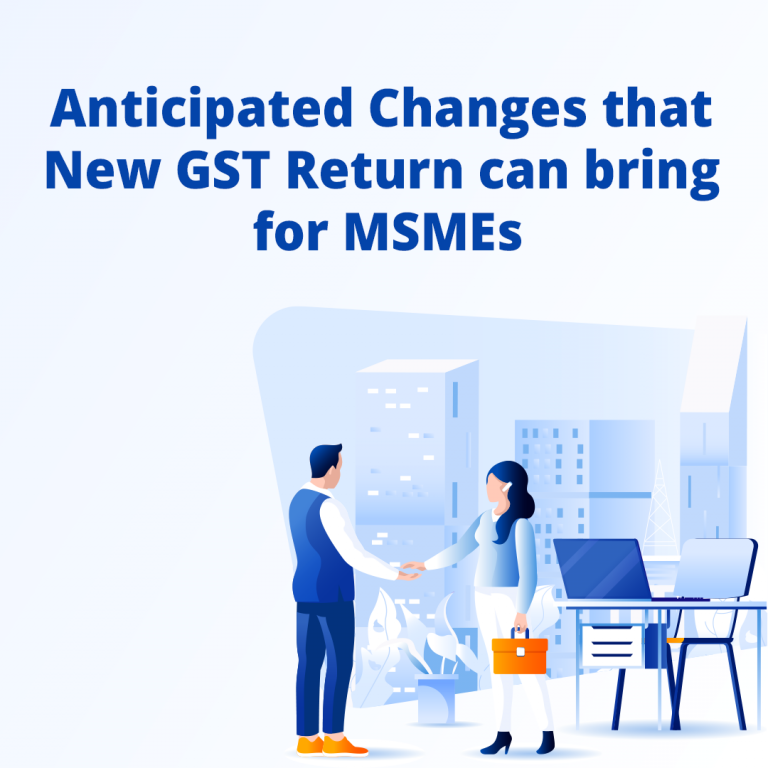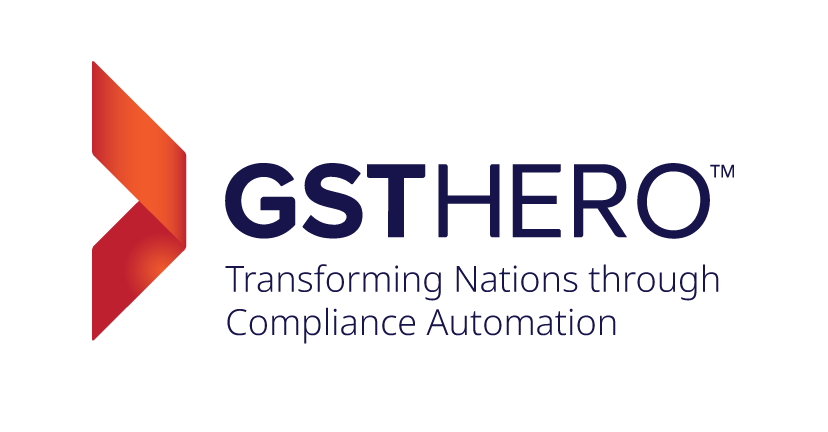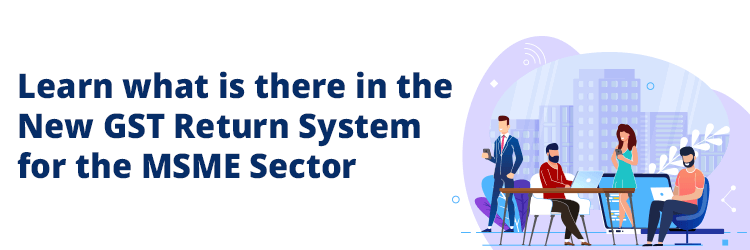Article Covers |
|---|
Watch video on Importance of Form GST REG-06
Background of the MSMEs & the MSME Act 2006
The MSME or Micro, Small & Medium Enterprises, as the name suggests is a class of small & medium-sized enterprises.
These Micro, Small & Medium Enterprises are classified under the MSME Act 2006, & were earlier categorized by their investments in plants & machinery. However, as per the recent update, the categorization of MSMEs have changed as follows-
MSMEs – Updated Definition
Enterprise Type | Investment in Business | Turnover |
|---|---|---|
Micro | Up to Rs. 1 Crore | Up to Rs. 5 Crore |
Small | Up to Rs. 10 Crore | Up to Rs. 50 Crore |
Medium | Up to Rs. 50 Crore | Up to Rs. 250 Crore |
Considering the differences between the MSMEs & the Large Enterprises, certain privileges have been given by the Government to the MSMEs.
The MSME Development Act 2006 is an act of the Parliament of India in favor of the MSMEs & to feed them some privileges so they can thrive & stand as a considerably strong competitor against other International or Domestic Enterprises.
Following is a list of few benefits enjoyed by the MSMEs in India-
1. Protection against delayed payment - Under the 2006 Act, all buyers must complete the payment to the MSME suppliers as per the agreed terms between them or in a maximum of 45 days from the purchase date. Exceeding the timeline could cost the Buyers interest & penalties of Monthly Compound Interest at three times of the Bank Interest Rate as notified by the RBI
2. Collateral-free loans from the bank - In the interest of the MSMEs Collateral-free Credits have been granted to the MSME Sector by the GOI. The Ministry of MSMEs, Government of India & SIDBI ( Small Industries Development Bank of India) established a Trust named Credit Guarantee Fund Trust for Micro and Small Enterprises (CGTMSE) to ensure the implementation of this scheme.
3. Electricity Bill Concession - There are Electricity Bill Concessions available for MSMEs They need to write an application & send it to the electricity board along with the MSME Registration Certificate, to avail the concession on electricity bills
4. Reimbursement of ISO Certification Charges - By dropping an application to the concerned authority, the MSMEs can also claim the reimbursement of the ISO certification costs.
5. Capital Grants for infrastructure Development - Since the Government believes that the MSMEs generate employment opportunities it is highly essential to consider their interests. And for the same reason the Government gives Capital Grants for so they can improvise the infrastructure as well as support for the development of the enterprise.
6. Reduced Interest Rates - Holding an MSME certification can help you get fewer interest rates in bank loans as well. Depending on the banks the MSMEs can enjoy 1% exemption on interest rates on ODs & fewer interest rates on loans.
7. 50% Subsidy on Registration - As an MSME you can also avail a 50% subsidy for patent registration, by just submitting an application to the respective Ministry.
Introduction to the GST Regime & its impact on MSMEs

The GST Regime was introduced to the system to increase the Taxpayer Base and including MSMEs was mandatory considering the high contribution of this sector into Exports & Revenue through Indirect Tax.
Although, before the GST system was established MSMEs ( Turnover of Rs. 1.5 Crores or less ) were free from all Excise Duty taxes, on the implementation of the Goods & Service Taxes the Small Business Category was introduced.
Any Business having a turnover of or less than Rs. 1.5 Crores is considered a Small Business in the GST Regime and are required to GST Returns Filing & pay taxes but on a quarterly basis.
Meaning MSMEs were open to the GST compliance procedures of registration, Return Filing, payments, refunds, returns, etc.
There are both cons & pros for MSMEs in the current system of GST for the MSMEs.
Online Processes (Filing & other)
- Cons- It may not be possible for all MSMEs to have the required resources & infrastructure for this digital transformation.
- Pros- No hustle of maintaining hardcopy of invoices or manual filing which will ensure the accuracy of the filing.
Registration
- Cons- Additional Registration costs may arise as not all MSMEs have the right resources to deal with online registration.
- Pros- Online process takes less time, involves lesser interference of the state officials & ensures timely delivery of services.
Return Filing
- Cons- Heavy changes to the system & training to the staff and additional compliance costing. 37-38 Returns to filed in a year, this may increase the manual efforts or compliance cost.
- Pros- Automation of the entire filing process to increase accuracy & reduce manual efforts. Automatic calculation of Input Tax Credit , Tax Liabilities & adjustment of the Tax liabilities with ITC available.
Compliance
- Cons- Changes to the system & adapting to them can increase the compliance load on the MSMEs. Despite being small MSMEs may take more time, effort & costs to become totally compliant with GST.
- Pros- In the longer though, the compliance pressure reduces & the MSMEs shall be prepared & more competitive. There are more perks of the GST System for the MSMEs than cons, in the long run.
Payments
- Cons- This can be a problem for MSMEs with low liquidity. MSMEs shall need an abundance of funds to maintain the Electronic Cash Ledger.
- Pros- Better transparent & efficient cashflow is ensured by the automization of payments.
Refunds
- Cons- The refund process has obligations such as regular & correct filing of relevant returns, supplier's filings & their compliance rating, etc.
- Pros- The process will become less time consuming & more efficient this is good for cash-flow & liquidity of the Businesses
Introduction to New GST Returns & the Revised Forms
The implementation of GST in the place of VAT Excise Duty System was already a drastic change for the MSMEs.
And yet again another drastic change awaits the Small & Medium Businesses Sector, New GST Returns.
The New GST Return Filing System will be implemented on all Businesses nation-wide from October 2020 & will replace the current major Forms GSTR-1, GSTR-2A & GSTR-3B.
The current forms are going to be replaced with GST RET-1, GST-RET 2, and GST RET-3 & will include 2 Annexures as well, Anx-1 & Anx-2.
See what each form signifies-
Annexure-1 : This is the liability declaration form that you must file monthly & declare all of your Sales Invoices & Debit Notes along with import details, if any. Most of the details of the sales Annexure are anticipated to be auto-populated from e-Invoicing Portal (IRP)
Annexure-2 : This annexure is the declaration of the Purchases, which is auto-populated from the Anx-1 of the suppliers. Taxpayers can take actions on the invoices of the Anx but cannot make any changes to it.
GST RET-1 : GST RET-1 or Normal GST Return form that all the normal Taxpayers need to file to calculate ITC & Tax Liabilities and to release them, monthly. This Form can be deemed as a replacement of GSTR-3B & is the main Return Form.
The filing of GST RET-1 is mandatory for all Businesses with annual turnover more than Rs. 5 Crores & optional for Businesses with a turnover less than Rs. 5 Crores.
- GST RET-2 : This form also known as Form Sahaj is again the main return form but to be filed quarterly.
This Return Form can be opted only by Businesses that have an annual turnover of less than Rs. 5 Crores and have only B2C outward supply.
- GST RET-3 : GST RET-3 or Form Sugam is yet another main Return Filing Form that small Businesses having annual turnover of Rs. 5 Crores & less can opt for.
Each of the three Return Filing Forms has its own features based on which a Taxpayer can classify themselves & opt for the form accordingly.
Refer to the Comparison Table given below to understand the features of each Form & which would be the most suitable for your BusinessParticulars | Normal (Monthly/Quartelry) | Sahaj (Quarterly) | Sugam (Quarterly) |
|---|---|---|---|
Turnover Limit | Mandatory for above Rs. 5 Crores. | Below Rs. 5 Crores (Optional) | Below Rs. 5 Crores (Optional) |
Forms to file | ANX-1, ANX-2, GST-RET 1 | ANX-1, ANX-2, GST-RET 2, PMT-08 | ANX-1, ANX-2, GST-RET 3, PMT-08 |
Allowed declaration | B2B, B2CS, RCM, Exports, SEZ supplies, E-commerce, Nil rated, exempt, etc. (All types) | B2C & RCM Nil rated, exempt, non-GST supply allowed only. | B2C, B2B & RCM Nil rated, exempt, non-GST supply allowed only. |
Information to consider |
|
|
|
New GST Return System- What’s in it for the MSMEs?

The implementation of New GST Returns on Businesses especially MSMEs has severe changes & effects on these Enterprises.
It hence becomes crucial to at least predict the most common changes that the system will bring & it's effects on Businesses, before its implementation, especially for small & medium-sized organizations that are more likely to be affected by the changes.
The New GST Return System has both drawbacks & perks for MSMEs, let us enlighten you with the most anticipated issues & benefits MSMEs are going to come across in the New GST Return System.
MSMEs May Face these 8 Issues in New GST Return Filing Regime
1. Compliance cost
The MSMEs hay have to invest in building the IT infrastructure of the Business or in some other alternative to comply with the system since not all MSMEs may have the required resources for the same.
2. Compliance efforts -
Adapting to the change is yet another challenge for the MSME sector. As the main forms of the current system are completely revamping it becomes essential to provide the proper training to the working staff regarding the new system & the rules.
This may be time taking and dependable as not everyone's understanding level is the same. It can create some issues initially.
Businesses & MSMEs can seek help from GST Suvidha Providers such as GSTHero for adapting to the New System & for Complying better efficiently with the most relevant software & prominent Training and support.
3. Payment Cycle issues-
This is one of the major & complex issues of New GST Returns for the MSMEs.
The MSMEs will opt for quarterly filings to reduce their compliance burden & thus file their returns on a quarterly basis.
This will create Credit claim issues for the Large Enterprises, as they will not be able to claim the Input Tax Credit on Invoices that the MSME supplier has not declared due to quarterly filing.
To make the MSMEs file their returns monthly to claim ITC, the Recipient can hold back the payment. This again he cannot do for more than 45 days as per the MSME act 2006.
As a result, Large Enterprises will be discouraged to deal with the MSMEs altogether, as they do not want any delays in the ITC claim.
Large Enterprises may only want to deal with GST compliant & monthly filing suppliers. This can oblige the MSMEs to opt for monthly filing.
Monthly filing of returns for small businesses can result in the increase of both manual efforts & compliance costs for the MSMEs.
4. Frequent filing of returns & tax payment -
Even if the MSMEs opt for quarterly filing the discharge of the Tax Liabilities is to be done monthly.
This raises a requirement of real-time maintenance & monitoring of the Business transactions. The MSMEs will have to invest their time or dedicate personnel to look into indirect taxation.
5. Frequent Actions required-
The MSMEs are required to take frequent actions in the New GST Return Filing System both as a Buyer & a Supplier.
As a Supplier, you may need to maintain the real-time invoice data and Tax Liability releasing very closely. And as a Buyer, you need to take multiple actions on the Invoices declared by your Supplier.
Then again the changes can only be made by the supplier so constant staying in touch & follow up is required in case of any changes in the Annexures of returns.
As a Buyer, you have the option to mark the invoices pending, accepted, or rejected. In case no actions are taken the Invoices will be deemed to be accepted.
Anticipated Benefits of New GST Return Filing for MSME's
1. Form Segregation
A better & more systematic segregation of the return forms is proposed in the New GST Return. The MSMEs can opt for any one of the four options as per the type of transactions they have for the sake of ease.
2. Better Compliance
The New Return System has reduced the burden of Compliance for the Small & Medium-sized Businesses. Filing the forms quarterly will help the MSMEs reduce the compliance of frequent filing to some extent.
3. Change in Turnover Limit
Under the New GST Return the threshold for the classification of small businesses is increased to a turnover of Rs. 5 Crore.
4. Reduced Time & Efforts
As the Businesses get digitalized & automated the manual efforts will tend to reduce & so will the time-consumption. This will also reduce the errors, arising due to manual data entries.
5. Increased Efficiency in management
As the MSMEs move towards New GST Returns where all the procedures & transactions are maintained & managed online through e-Invoicing & return Filing, the management of GST & ITC becomes more efficient & less erroneous. This is a bright side for the MSMEs as better management of GST Liabilities & ITC will save the working capital of the Business
Conclusion
To conclude the article, MSMEs or small businesses though generate high revenue for the Government collectively but are highly fragile on an individual level.
Exposed to heavy changes & the effects on them can be severe. For any changes brought to the system, you may have to reframe your own system, & your knowledge on the same as well.
Adapting to changes may not be easy for Businesses with limited or restricted resources, although there are some perks for MSMEs in the New System as well.
The New GST Return also doesn't hamper the privileges given to the MSMEs. the actual implementation if the system will paint a clearer picture of real effects of the new system.
Other practical problems may arise upon implementation but Businesses must learn to improvise so they don't lose anything to non-compliance with the GST Regime.

